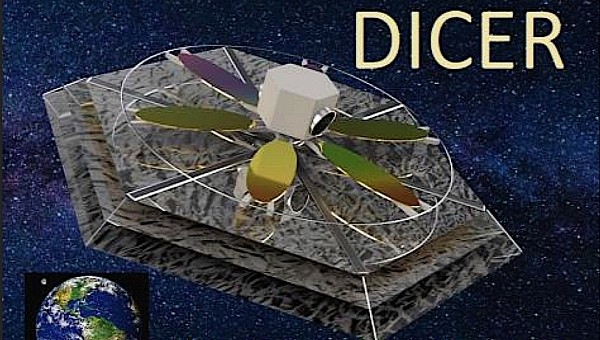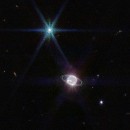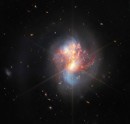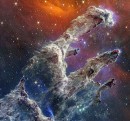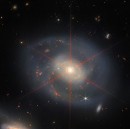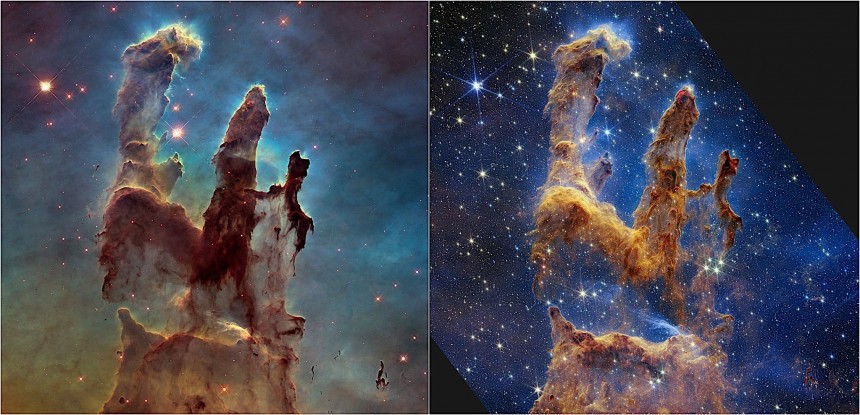The James Webb Space Telescope (JWST) is the most complex piece of hardware of its kind ever designed by the human race. And it shows, given how in the short time it’s been floating around in space at the Lagrange point 2 (L2) it stunned us with information and detail about the Universe we could have barely dreamed of. But for all its merits, Webb has a lot of limitations.
As per NASA’s own admission, our telescopes have so far detected some 5,000 planets in star systems very far away from our own. Of them, very few are considered to possibly be Earth-like. But that only means they’re either in their solar system’s Goldilocks Zone (which means the planet is at the right distance from its Sun for water in liquid form to be possible), or roughly the same size as our planet, or both. And that’s pretty much all we know about them.
To put it bluntly, to date not a single planet out there has been confirmed as being just like Earth, not only in terms of location and size, but also when it comes to it having a suitable atmosphere for life as we know it to exist. It doesn’t mean they don’t exist, it's just that with our current level of technology, and given the distances involved to other worlds, it’s impossible to find them.
Just to give you an idea of what that means, consider this: we’d need an infrared telescope with a 20-meter (66 feet) mirror deployed in space to detect an Earth-like planet at distances of 30 light years. The James Webb, which “is NASA's largest and most powerful space science telescope,” has a mirror of 6.6 meters (22 feet). That’s a lot, by other telescopes’ standards, but not nearly so for the purpose of finding other worlds.
Also, keep in mind it cost us $10 billion to put Webb together and eventually launch it into space, so placing a much larger such tool up there would be prohibitively expensive. Provided we had the tech to launch such massive hardware, which we don’t.
So alternative solutions would have to be found. One of them could be called DICER and was born in the mind of Heidi Newberg, a researcher with the Rensselaer Polytechnic Institute in New York state. It’s so good, at least on paper, that NASA included it in the list of 14 ideas to receive an Innovative Advanced Concepts (NIAC) grant back in January.
DICER stands for Diffractive Interfeo Coronagraph Exoplanet Resolver, and it’s in effect a telescope of sorts that instead of using a single mirror uses two, much smaller ones. They both collect light with two or more flat diffraction gratings ten meters (33 feet) in length. This should make it possible for the tool to achieve the 20-meter diffraction limit - the point from where a telescope can no longer make sense of two objects separated by a certain distance.
The discovery of Earth-like alien planets orbiting other Suns would also mean having to dim said Sun’s light to a degree that would make observation possible. Just to give you an idea of how bad sunlight is when looking for other worlds, consider the fact aliens now looking at us see our Sun as being one million times brighter than Earth.
DICER would use a simple coronagraph (a tool used by astronomers to look at the Sun’s corona without burning their eyes off) to do that. The proposed design would dim the Sun by a factor of one million, says Newberg.
But the detection of an alien world in the Goldilocks Zone doesn’t necessarily mean we’ve found a second Earth. For that, we’d have to determine the composition of its atmosphere, and with our current tools, we can’t really do that at such distances.
DICER could possibly see ozone in the atmosphere of a planet located 30 light years away, but it would also be capable of determining orbital periods, semimajor axes, luminosity (in infrared), and even temperature.
At the time of writing, and like all other NIAC concepts recognized by NASA, this one is too in its early stages. Its author warns of plenty of issues with the idea, that have to do with the telescope’s optical and thermal properties (no details were given on those), but also with the actual deployment of the thing in space.
The funds received as part of the NIAC grant will be used by the researcher to fine-tune a proof-of-concept design she already has, in a bid to reduce size (down to a probe, maybe) and cost. No timeline as to when we’re to expect updates has been provided.
As for when we’ll get to actually see such a thing in action, keep in mind that aside from the $10 billion we mentioned earlier, James Webb also took 30 years to make...
To put it bluntly, to date not a single planet out there has been confirmed as being just like Earth, not only in terms of location and size, but also when it comes to it having a suitable atmosphere for life as we know it to exist. It doesn’t mean they don’t exist, it's just that with our current level of technology, and given the distances involved to other worlds, it’s impossible to find them.
Just to give you an idea of what that means, consider this: we’d need an infrared telescope with a 20-meter (66 feet) mirror deployed in space to detect an Earth-like planet at distances of 30 light years. The James Webb, which “is NASA's largest and most powerful space science telescope,” has a mirror of 6.6 meters (22 feet). That’s a lot, by other telescopes’ standards, but not nearly so for the purpose of finding other worlds.
Also, keep in mind it cost us $10 billion to put Webb together and eventually launch it into space, so placing a much larger such tool up there would be prohibitively expensive. Provided we had the tech to launch such massive hardware, which we don’t.
DICER stands for Diffractive Interfeo Coronagraph Exoplanet Resolver, and it’s in effect a telescope of sorts that instead of using a single mirror uses two, much smaller ones. They both collect light with two or more flat diffraction gratings ten meters (33 feet) in length. This should make it possible for the tool to achieve the 20-meter diffraction limit - the point from where a telescope can no longer make sense of two objects separated by a certain distance.
The discovery of Earth-like alien planets orbiting other Suns would also mean having to dim said Sun’s light to a degree that would make observation possible. Just to give you an idea of how bad sunlight is when looking for other worlds, consider the fact aliens now looking at us see our Sun as being one million times brighter than Earth.
DICER would use a simple coronagraph (a tool used by astronomers to look at the Sun’s corona without burning their eyes off) to do that. The proposed design would dim the Sun by a factor of one million, says Newberg.
DICER could possibly see ozone in the atmosphere of a planet located 30 light years away, but it would also be capable of determining orbital periods, semimajor axes, luminosity (in infrared), and even temperature.
At the time of writing, and like all other NIAC concepts recognized by NASA, this one is too in its early stages. Its author warns of plenty of issues with the idea, that have to do with the telescope’s optical and thermal properties (no details were given on those), but also with the actual deployment of the thing in space.
The funds received as part of the NIAC grant will be used by the researcher to fine-tune a proof-of-concept design she already has, in a bid to reduce size (down to a probe, maybe) and cost. No timeline as to when we’re to expect updates has been provided.
As for when we’ll get to actually see such a thing in action, keep in mind that aside from the $10 billion we mentioned earlier, James Webb also took 30 years to make...
